Brain bucket. Lid. Stack hat. Call it what you like, a helmet is one of the most important pieces of MTB equipment you’ll invest in. Sure, your wheels are the merchants of good times, but when you inevitably become unstuck, it’ll be your helmet that saves you from potential disaster.
Just like bikes, helmets have come a long way in a short period of time. Gone are the days of the daggy yellow stack hat. Modern helmets blend comfort, breathability, style and safety into one neat, lightweight package.
In recent years, ‘trail’ or ‘trail-style’ helmets have evolved to suit the growing market of mountain bike riders who don’t fit into, or conform with, the traditional cross-country, downhill or road crowds.
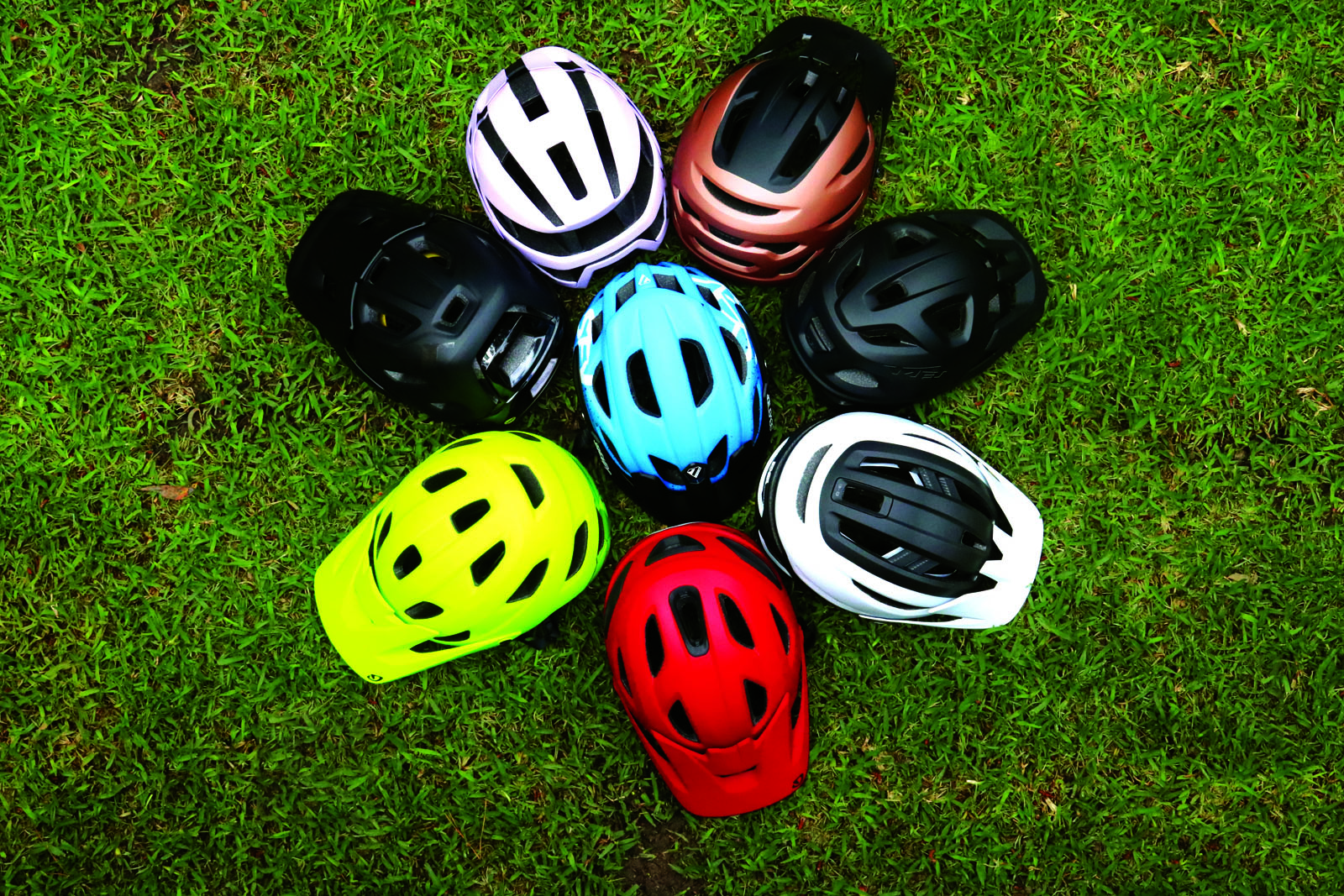


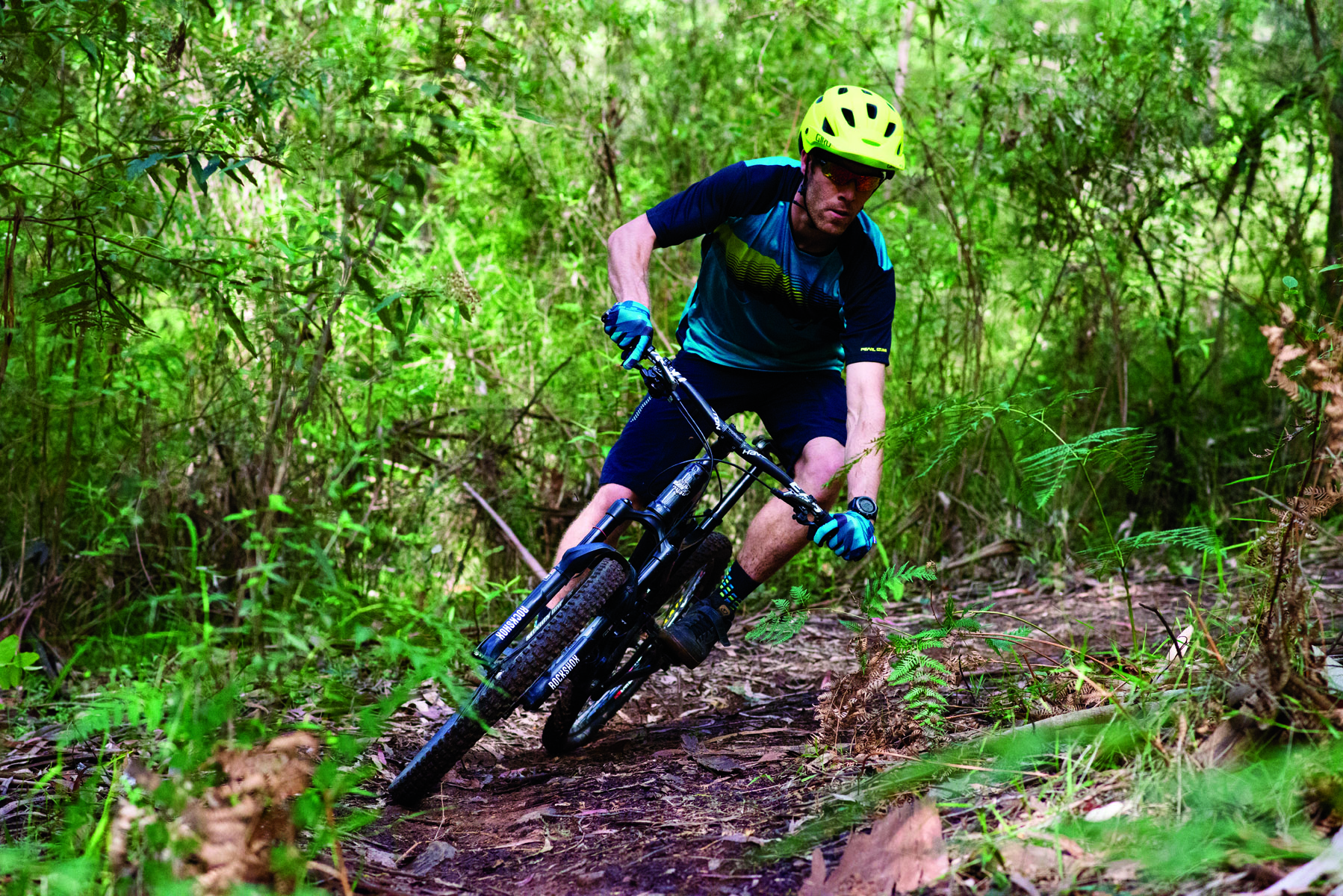
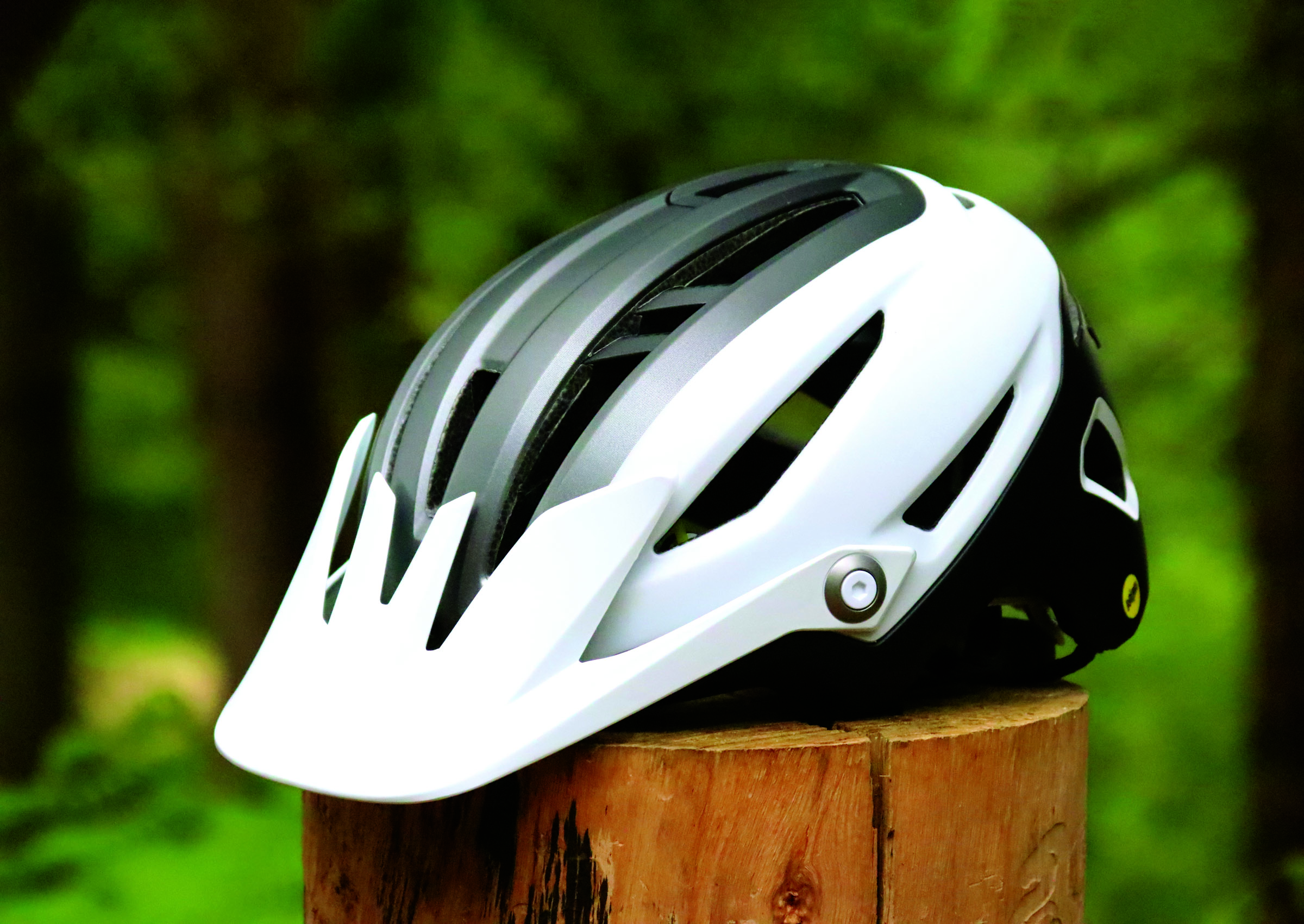
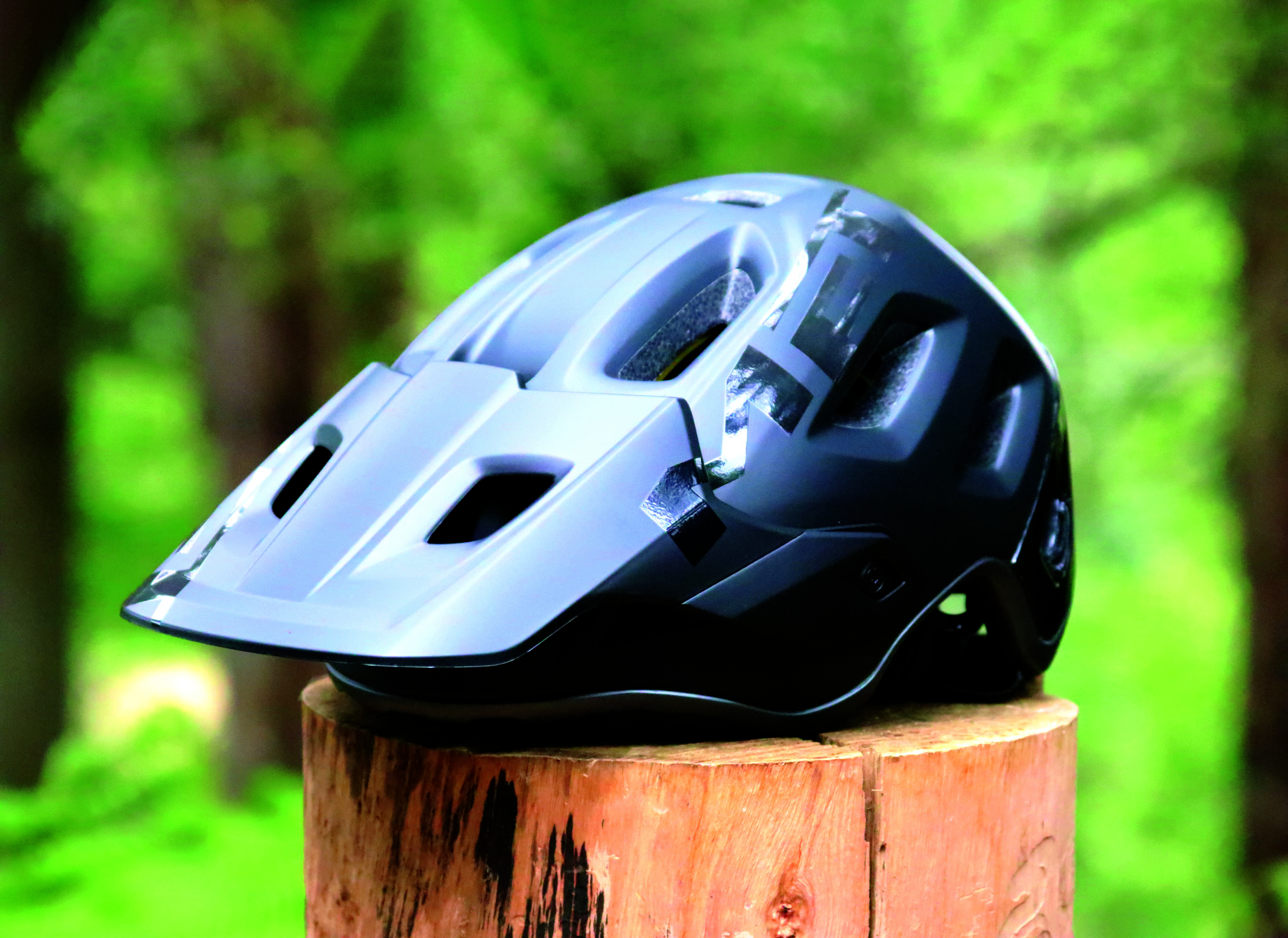
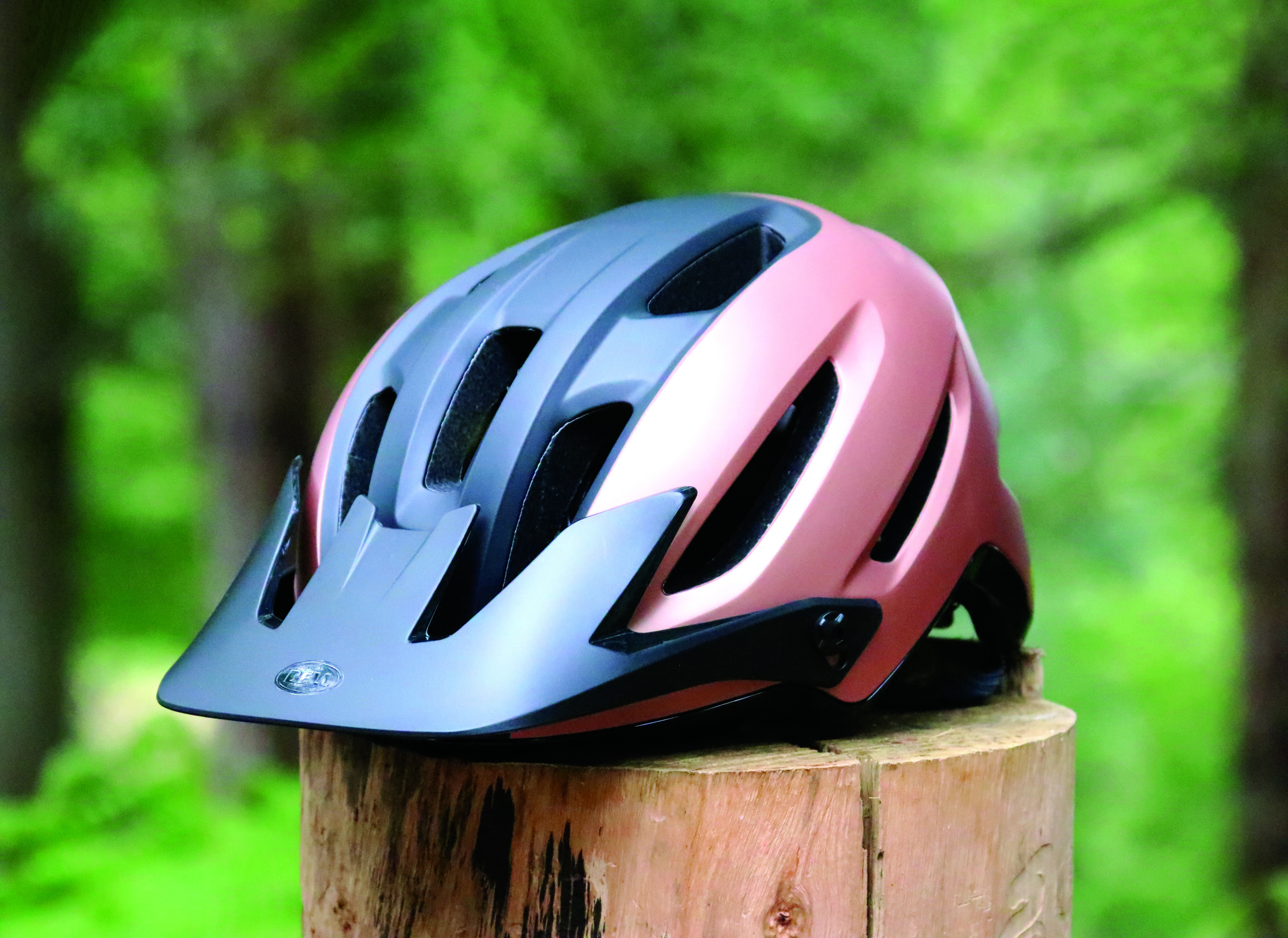
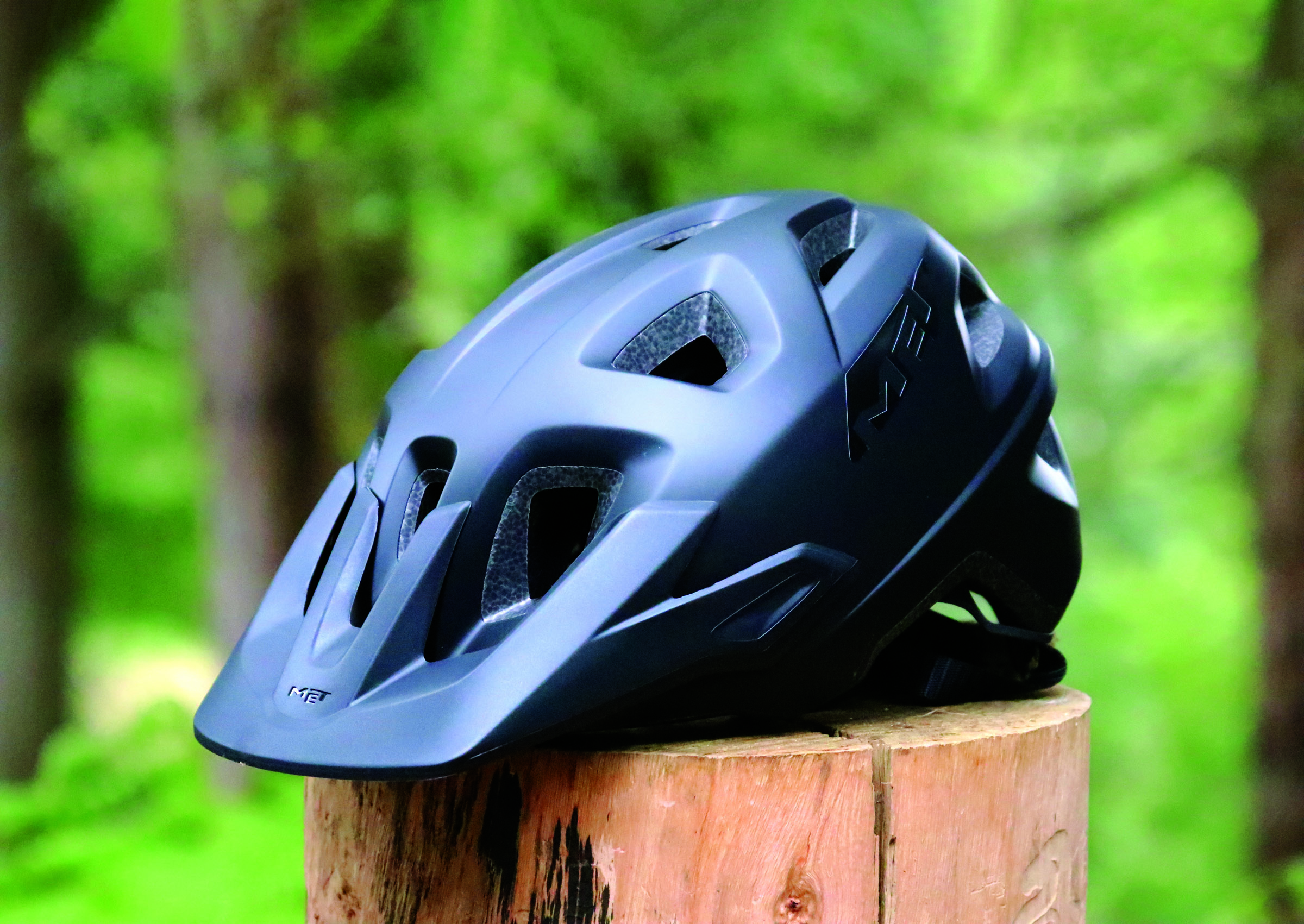
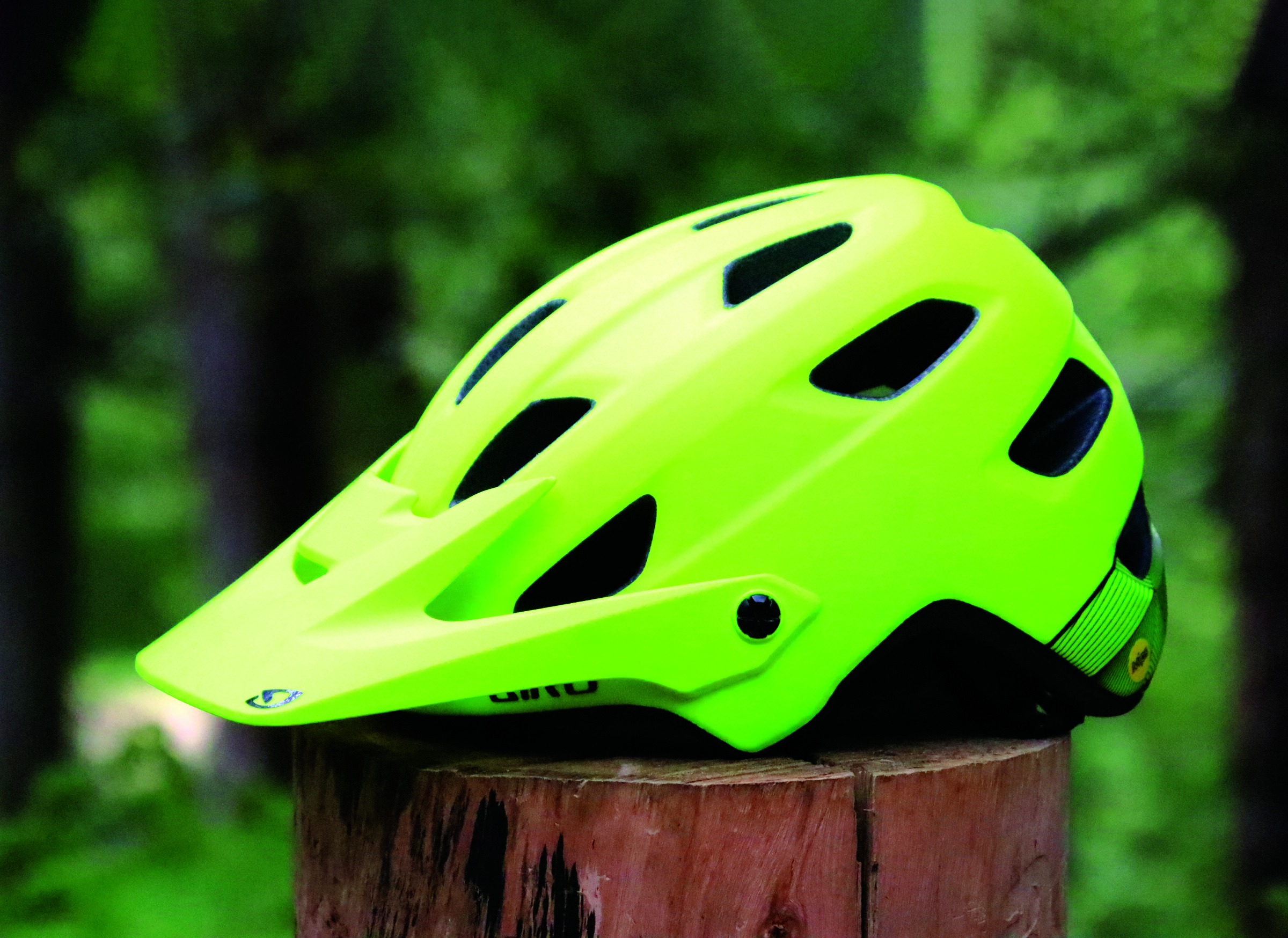
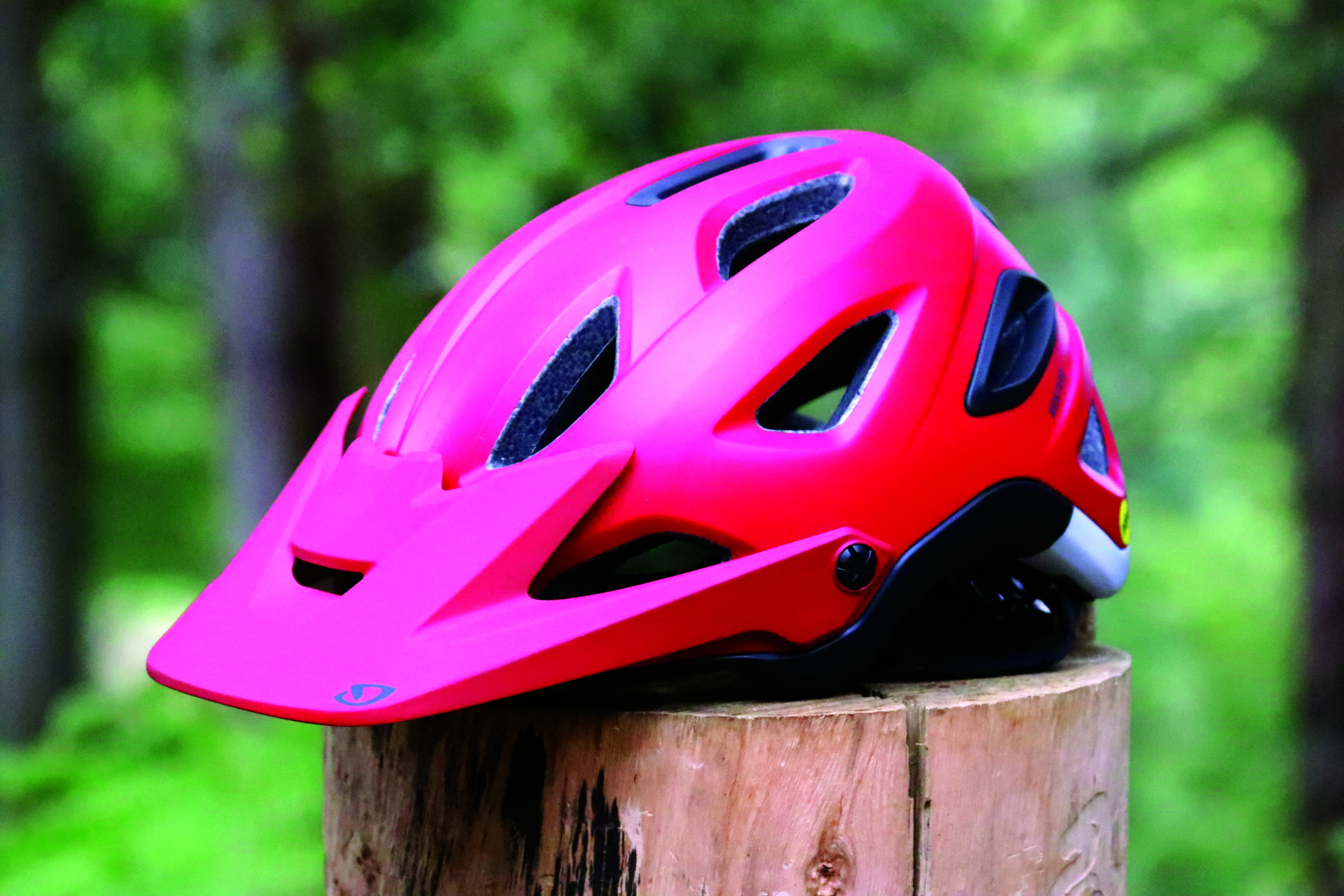
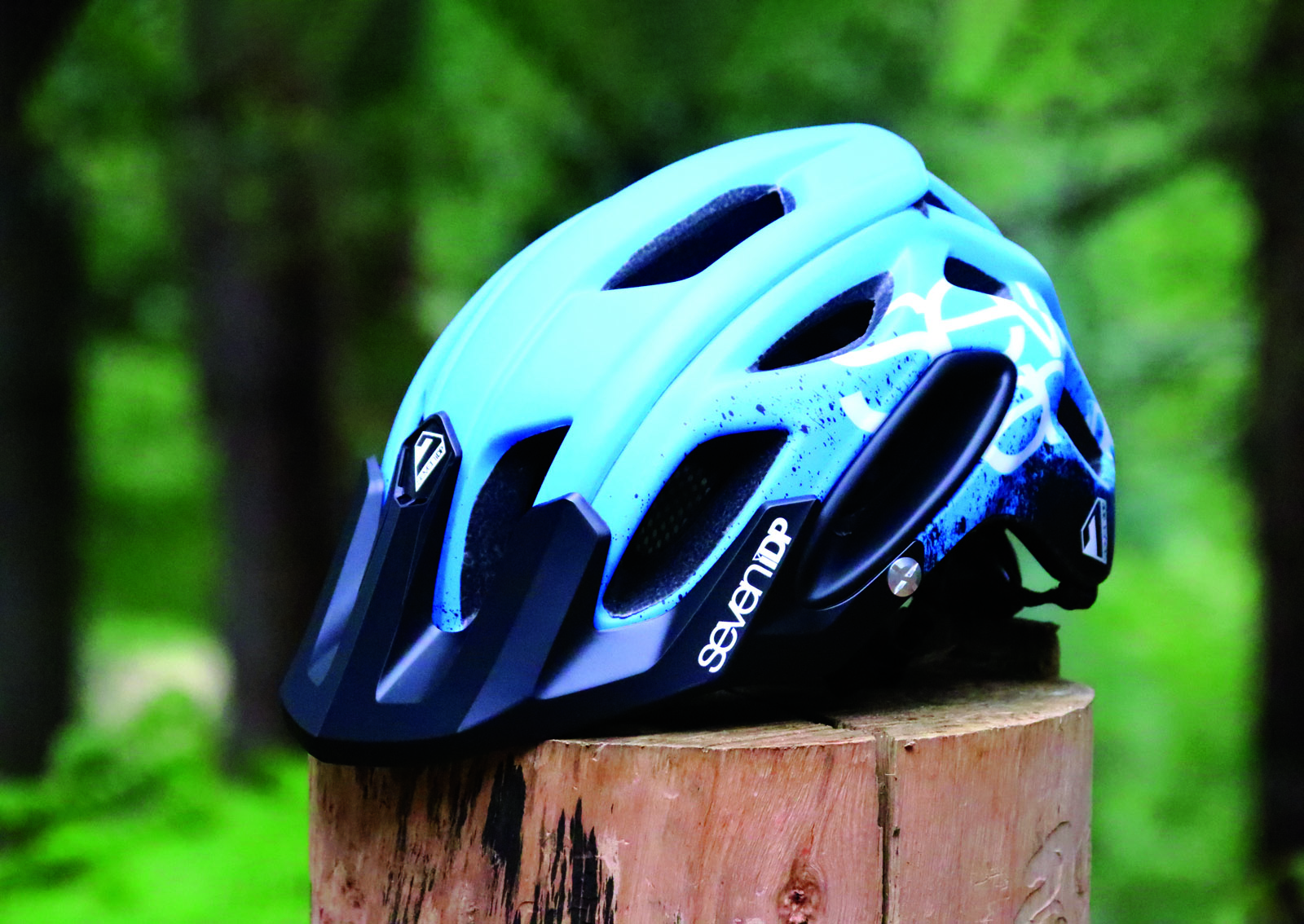
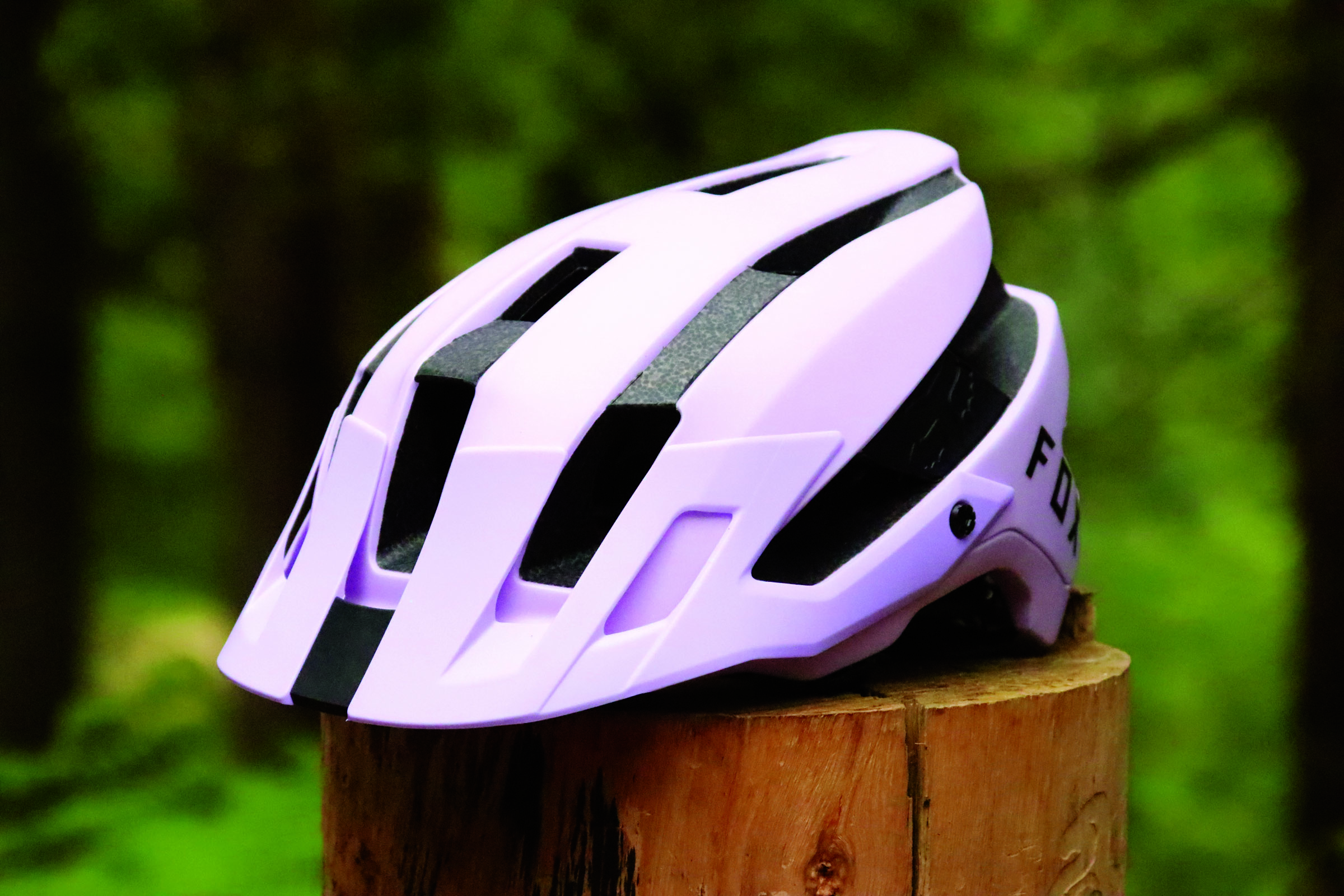
WHAT THE MIPS?
Throughout the article, I’ll refer to MIPS. This stands for Multi-Directional Impact Protection System, a system which incorporates a low-friction slip-plane inside the helmet, between the rider’s head and the helmet’s shell.
The system is designed to reduce the rotational forces a rider’s brain can experience during certain impacts. During an angled impact, MIPS allows the helmet to rotate independently around the head, to redirect some of the energy which would otherwise impact the rider’s brain.
MIPS has become increasingly common over the past few years, with most major manufacturers utilising the technology in at least some models. It does add to the price, but if you are after the very best in protection a MIPS-equipped helmet is a worthy investment.
WHAT’S A TRAIL HELMET?
Generally speaking, trail helmets are slightly larger and burlier than traditional helmets. This is because they are built to withstand the types of crashes common for trail riders. In most cases, they feature a large peak and extended protection at the back of the head.
While airflow and weight can be affected in comparison to a traditional helmet, a trail helmet packs a punch in the protection stakes and is, therefore, a smart investment for any trail rider.
TESTING TIMES
The marketplace is packed with options; as a consumer, it can be mighty difficult to make your choice. That’s why I decided to trail test eight of the leading helmets in a range of conditions, putting them through thorough testing regimes to analyse their fit, adjustability, comfort, weight, airflow, style, features and price.
I doubted WorkSafe would look too kindly on me crash testing the helmets by acting out nasty stacks, so the test process did not cover any crash or destructive testing; instead, to gauge this, I balanced my own observations of safety features against the claims of manufacturers.
I also weighed each helmet, but it’s worth noting that all helmets tested were a large size, so if you’re a smaller size, you’re likely to see weight reductions.
Without further ado, let’s get started.
BELL SIXER
Best tech features
Bell is no newbie at helmet engineering, with almost 100 years of experience to its name. The Sixer is a testament to this, with a huge range of modern features packed into one slick looking helmet.
Out of the box, the construction looks spot on. The matte white/black finish is on point and the rubberised goggle strap gripper at the rear looks modern and functional.
Once on your head, the Sixer does not disappoint. This is one comfy helmet!
The rear adjustment dial feels durable and works well to adjust the helmet. The helmet is MIPS-equipped and the internal padding fits well on the MIPS lining.
The Sixer was the heaviest helmet on test. The secure fit helps to alleviate this issue when riding, but the weight is noticeable at first, especially if you have been using a lighter lid.
Despite the weight, the Sixer was one of most breathable. I never felt my head cooking while using this helmet.
The visor is adjustable to four different positions. In the lowest position, it is quite visible when riding, although well out of your line of sight and unlikely to impact vision.
A neat feature of the Sixer is the ability to easily integrate a camera or light into the top.
Weight: 448g
Cost: $249.95
Distributor: Cassons (02 8882 1900)
Hits: A modern looking, feature-packed helmet which is comfy to boot.
Misses: A tad heavy. The matte white looks beaut new, but may not stay that way for long.
MET ROAM
Toughest looking
Matte black makes anything look tough. Add that to a modern design, with a few gloss black accents, and you have one bad-ass helmet.
Luckily, it backs up its burly look with a bunch of safety features. The Roam is MIPS-equipped and has plenty of protection around the rear and temple areas.
The rear adjustment dial feels smooth but durable. This retention system is not only adjusted via the dial; there are also two occipital and three vertical internal adjustments to ensure the perfect fit. The Roam is super comfy to wear and, at 399g, it was the lightest full-feature helmet on test.
One of my favourite design elements was the adjustable peak. It’s constructed of injection moulded plastic, which is quite flexible. In the event of a frontal impact, the visor has the ability to flex to reduce the chance of it breaking. On the side of the visor, near its mounting bolt, there is a clip to securely hold goggle straps in place.
At the top of the shell, inside the helmet, there’s another neat feature: a narrow channel to securely hold the straps for an action camera or helmet-mounted light.
On the trail, the Roam delivers as expected. With 22 vents, overheating wasn’t an issue. The lightweight design and secure fit mean you’ll forget you’re wearing it almost straight away.
Weight: 399g
Cost: $279.95
Distributor: Advance Traders (1300 361 686)
Hits: MIPS, flexible peak and lightweight construction.
Misses: The large peak won’t appeal to everyone.
BELL 4FORTY
Best value
The mid-range trail helmet market is a competitive space and the 4Forty is right in the mix. During testing, it proved it can hold its ground, with points on the board in all the right areas.
Like its pricier cousin, the Sixer, the 4Forty feels secure and comfortable. Adjustment via the rear Float-Fit dial provides a firm fit. This system has four points of vertical adjustment to ensure the rear dial and retention system sit perfectly at the back of your head.
The visor is adjustable and, at its highest setting, there is room to fit a pair of goggles under the visor when they aren’t being worn.
The 4Forty features MIPS, a polycarbonate shell and extended rear coverage. On paper, this stacks up to a safe helmet, designed to meet the rigours of trail riding, at under $160.
With 15 vents, this helmet isn’t full of holes; however, the vents are large enough and provide good airflow and cooling.
Like your dad’s old Toyota, the 4Forty is reliable, durable and fit-for-purpose. Sure, it may lack some of the features of a top-end helmet, but that’s not what it is. As a mid-ranger, it meets the brief.
Plus, you’re bound to score trail kudos with its stylish design – something that can’t be said about your dad’s old Toyota.
Weight: 434g
Cost: $159.95
Distributor: Cassons (02 8882 1900)
Hits: MIPS-equipped, comfortable and at a value price.
Misses: A few more vents, particularly around the forehead, would be great.
MET ECHO
Lightest
Starting out in mountain biking can be expensive. Enter the MET Echo – a sub $100 trail helmet with design elements that have trickled down from its more expensive cousins.
The Echo features extended rear and temple coverage and, like the Roam, its visor is made of flexible plastic (which is removable). However, the Echo isn’t fully kitted with features like pricier models, so when I first put it on, its weight – or lack thereof – was immediately noticeable.
The rear dial secures the helmet in place; the fit is snug and reasonably comfortable. It’s no leather recliner, more like the trusty old couch at nan’s house. But at under a hundred bucks, it delivers great comfort for price.
When ripping through trails on warm days, my head did start to get a bit warm, due to the matte black colour and venting arrangement. With only 14 vents, the Echo can limit air movement, albeit only slightly.
Additionally, the removable visor connects via a couple of holes on each side of the helmet. This connection is not adjustable and, as a result, the visor moved around a bit when riding. While this didn’t cause any safety or functional concerns, the noise was noticeable at first, but then easily tuned out.
As far a budget trail helmets go, the Echo ticks all the boxes – style, weight, comfort and price. If you’re starting out or have a limited budget, the MET Echo is well worth a look.
Weight: 309g
Cost: $99.95
Distributor: Advance Traders (1300 361 686)
Hits: Value for money and mean looks.
Misses: Can get a bit warm under the lid.
GIRO CHRONICLE
Most extensive head coverage
The Chronicle is Giro’s mid-range trail helmet and shares many safety features with its more expensive cousin, the Montaro.
Rear protection is extensive and the construction is beefy. The peak can easily be adjusted to fit goggles underneath. This adjustment mechanism is firm and it felt the most secure of all on test.
The helmet is secured in place via the Roc Loc adjustment system and has three vertical positions which the mechanism can be adjusted to, so as to provide optimal fit. It’s a comfortable fit too, thanks to the generous padding. Interestingly, the padding can absorb up to 10 times its weight in sweat. A gross thought, but a handy feature!
16 vents and internal channelling in the shell ensure good airflow, but on occasions my noggin did become a little warm, so a few more vents wouldn’t go astray.
The addition of MIPS bolsters the safety credentials of the helmet. However, I noticed the MIPS liner tended to creak a little as it moved around on the helmet shell, especially on rough terrain. This certainly isn’t a deal-breaker, but if you’re the sort of person who can’t even stand the sound of your own breathing, then the Chronicle may not be for you.
It would be remiss of me not to mention the elephant in the room here – the colour! The lime/black helmet I tested won’t be everyone’s cup of tea. But rest assured, Giro also makes the Chronicle in a bunch of other colours.
Overall, the Chronicle is a top quality helmet at a great price.
Weight: 437g
Cost: $169.95
Distributor: Sheppard Cycles (1300 883 305)
Hits: Extensive coverage, MIPS and overall design make for a robust and safe helmet.
Misses: Creaky MIPS/shell combo.
GIRO MONTARO
Most comfortable
Giro has been making bike helmets for over 30 years, so they know a thing or two about helmet design and comfort; as soon as you put the Montaro on, their experience becomes evident. The internal padding is smooth and your head simply slides into place.
Surprisingly, the Montaro was the least padded helmet on test; there is only a brow pad and two other small pads towards the rear of the helmet. Yet, despite the lack of padding, it was super comfortable thanks to a well designed shape and shell, and the reliable Roc Loc adjustment system.
The Montaro features a number of smart, subtle design features. At the rear, the three large vents are rubber lined, which at first appears to be a style feature – that is, until you use the helmet with goggles and discover this rubber lining doubles as a goggle strap gripper.
On top, the central vent features grooves to accept the tabs of the removable camera mount. Fitting this was a bit fiddly at first but, once in place, it was secure.
When riding, the Montaro was forgettable – and that’s a positive. It simply did the job of a helmet and gave me no reason to notice I was even wearing it. It was generally cool on the head, very comfortable and hassle-free. Plus, with all the safety features of a top end trail helmet – MIPS, extensive coverage, EPS liner and an integrated roll-cage – it enables you to ride fearlessly.
Weight: 429g
Cost: $249.00
Distributor: Sheppard Cycles (1300 883 305)
Hits: Subtle design features and comfortable fit.
Misses: Break-away camera mount can be a bit fiddly to mount/remove.
SEVEN iDP M2
Best airflow
Seven iDP has been around for a while, but is making a push into the Aussie market thanks to pushys.com. The ‘seven’ of the brand name refers to its seven ‘founding fathers’, while ‘iDP’ stands for ‘intelligent design protection’. The M2 is the brand’s top of the range trail helmet, yet it still comes in at a price well below most other brands.
Thanks to heaps of vents, a hot head was never an issue. The four front facing vents are covered internally by a bug mesh built into the padding. As a rider who has suffered both bee and wasp stings to the head while riding, I approve of this feature.
The visor is adjustable, secured in place by a small metal dial hidden underneath. This visor doesn’t have as much adjustment as most others on test, so you can’t accommodate goggles under it.
The M2 does not feature MIPS, but it is constructed using a design called ‘Conehead Technology’. The shell is made from dual density foam, with the two layers joining with interlocking ‘cones’. Under an impact, the foam collapses and spreads energy sideways, thereby reducing the overall g-force for your head. Smart!
The front pad is comfortable, but some might find the rear padding around the adjustment dial slightly uncomfortable, given its tendency to dig in. Due to its size, this adjustment dial is easy to use, but it does stand out visually at the helmet’s rear. The chin straps were easily adjusted with only one hand.
The M2 is good value at under $120. The fit and style won’t suit everyone, but for those on a budget looking for a reliable and durable lid, it’s well worth trying out.
Weight: 343g
Cost: $119.99
Distributor: pushys.com.au
Hits: Value pricing and bug mesh liner.
Misses: Some may find the rear padding uncomfortable.
FOX FLUX
Best comfort for price
Fox would have to be one of the most recognisable MTB apparel brands. It has a reputation for producing quality gear that successfully blends function and fashion.
The Flux is no exception. It’s been a popular model in the Fox line-up for over 12 years, with newer models undergoing a makeover to achieve a more streamlined look.
Unlike most other models on test, the Flux doesn’t have a large visor. This means the three large lower-front vents can achieve the bulk of the ventilation, taking in a heap of air and keeping your head cool all ride long. The other 11 large vents play a more minor role in keeping the helmet ventilated.
The Flux visor is super malleable and would likely bend on impact, then bounce back into position, rather than crack.
Fox claim the Flux has been designed with aggressive trail riders in mind, meaning the helmet provides extended protection on the sides and rear; however, compared to other models on test, the Flux offers less rear coverage. Additionally, this Flux didn’t have MIPS, but other Flux versions do, for a slight price increase.
Wearing the helmet, the smooth, anti-microbial liner is noticeable, for good reason; it’s very comfortable and padded in all the right areas. Correct fit is obtained by adjusting the rear tension dial, which is smooth and light to turn; however, on a few occasions I inadvertently touched the dial only to have it loosen.
The Flux is a unisex design. The lilac model tested is likely to appeal more to female riders, but rest assured, the Flux is available in a wide range of colours.
Weight: 404g
Cost: $149.99
Distributor: Monza Imports
Hits: Comfort and airflow are both excellent.
Misses: Reduced coverage compared to other models. Rear adjustment dial can be inadvertently loosened.





